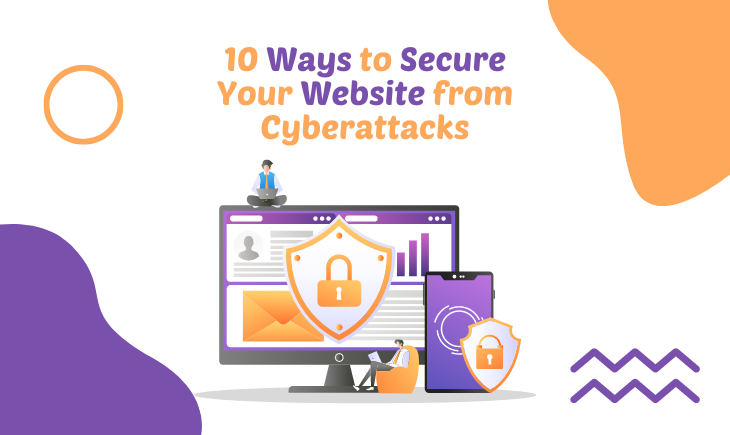
10 Ways to Secure Your Website from Cyberattacks
Securing your website against cyberattacks is crucial to protect sensitive client data and maintain the integrity of your services. Here are some essential tips to make your website more secure:
1. Use Strong Passwords
Implement solid passwords for all user accounts associated with your website, including content management system (CMS) logins, hosting accounts, and email accounts. Utilize uppercase and lowercase letters, numbers, and special characters. Avoid using easily guessable passwords, and consider using a password manager to store and generate complex passwords securely.
2. Keep Software and Plugins Up to Date
Regularly update your website’s CMS, plugins, themes, and other software. These updates often include security patches that acknowledge known vulnerabilities. Outdated software can be a quick and easy target for cybercriminals, so staying up to date is essential to mitigate potential risks.
3. Implement Secure Socket Layer (SSL) Encryption
Secure your website with an SSL certificate to enable HTTPS encryption. SSL encryption ensures that data transmitted between your website and users’ browsers is securely encrypted, protecting sensitive information from interception by malicious actors. SSL certificates also enhance user trust, as users can see the padlock symbol on the lefthand side of the browser address bar, indicating a secure connection.
4. Employ Web Application Firewall (WAF)
Consider implementing a web application firewall to protect your website from common cyber threats, such as SQL injection, cross-site scripting (XSS), and distributed denial-of-service (DDoS) attacks. A WAF acts as a filter between your website and incoming traffic, monitoring and blocking suspicious or malicious requests and providing additional protection.
5. Conduct Regular Backups
Back up your website’s data, including files, databases, and configurations—store backups in secure locations separate from your website server. In a cyberattack or data loss, backups quickly restore your website to a previous, secure state. Regular backups help mitigate the impact of cyber incidents and ensure business continuity.
6. Implement User Access Controls
Limit user access to your website’s CMS and other sensitive areas. Assign appropriate access levels to users based on their roles and responsibilities. Review and revoke access for users who don’t require it anymore. This minimizes the risk of unauthorized access and reduces the likelihood of internal security breaches.
7. Monitor Website Activity
Implement website monitoring tools or security plugins that provide real-time alerts and notifications for suspicious activities, such as unauthorized login attempts or unusual traffic patterns. Monitoring helps you detect and respond promptly to potential security incidents, minimizing the impact and preventing further damage.
8. Educate and Train Staff
Human error is a significant factor in cybersecurity incidents. Educate your staff about best practices for online security, including recognizing phishing attempts, avoiding suspicious downloads, and using strong passwords. Conduct regular training sessions to reinforce security protocols and update employees on emerging cyber threats.
9. Conduct Security Audits
Regularly perform security and vulnerability assessments of your website. This can be done by engaging professional security experts or utilizing automated security scanning tools. These audits help identify potential weaknesses or vulnerabilities in your website’s infrastructure, allowing you to address them proactively.
10. Develop an Incident Response Plan
Prepare an incident response plan to guide your team’s actions during a cybersecurity incident. Define roles and responsibilities, establish communication channels, and outline the steps to contain, investigate, and recover from an incident. A well-defined plan ensures a swift and coordinated response, minimizing the impact of an incident.
Conclusion
By implementing these tips and best practices, you can enhance the security of your firm’s website, protect client data, and maintain the trust and integrity of your services. Regularly review and upgrade your security measures to avoid evolving cyber threats and ensure ongoing protection.

